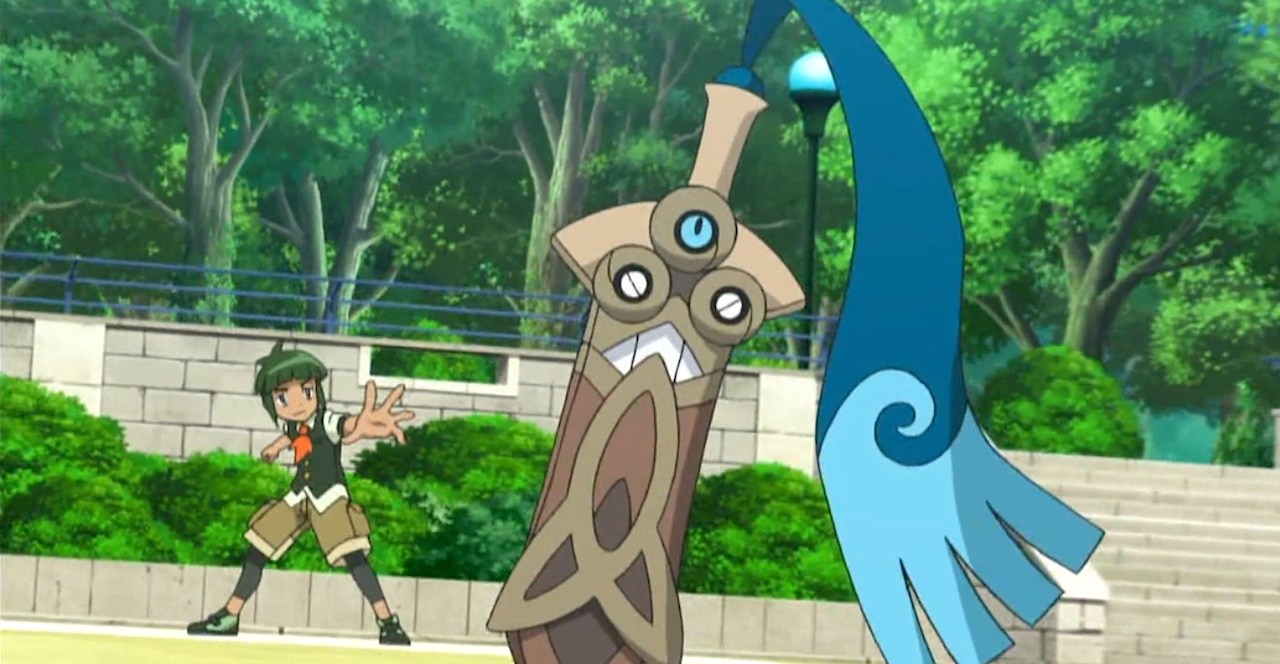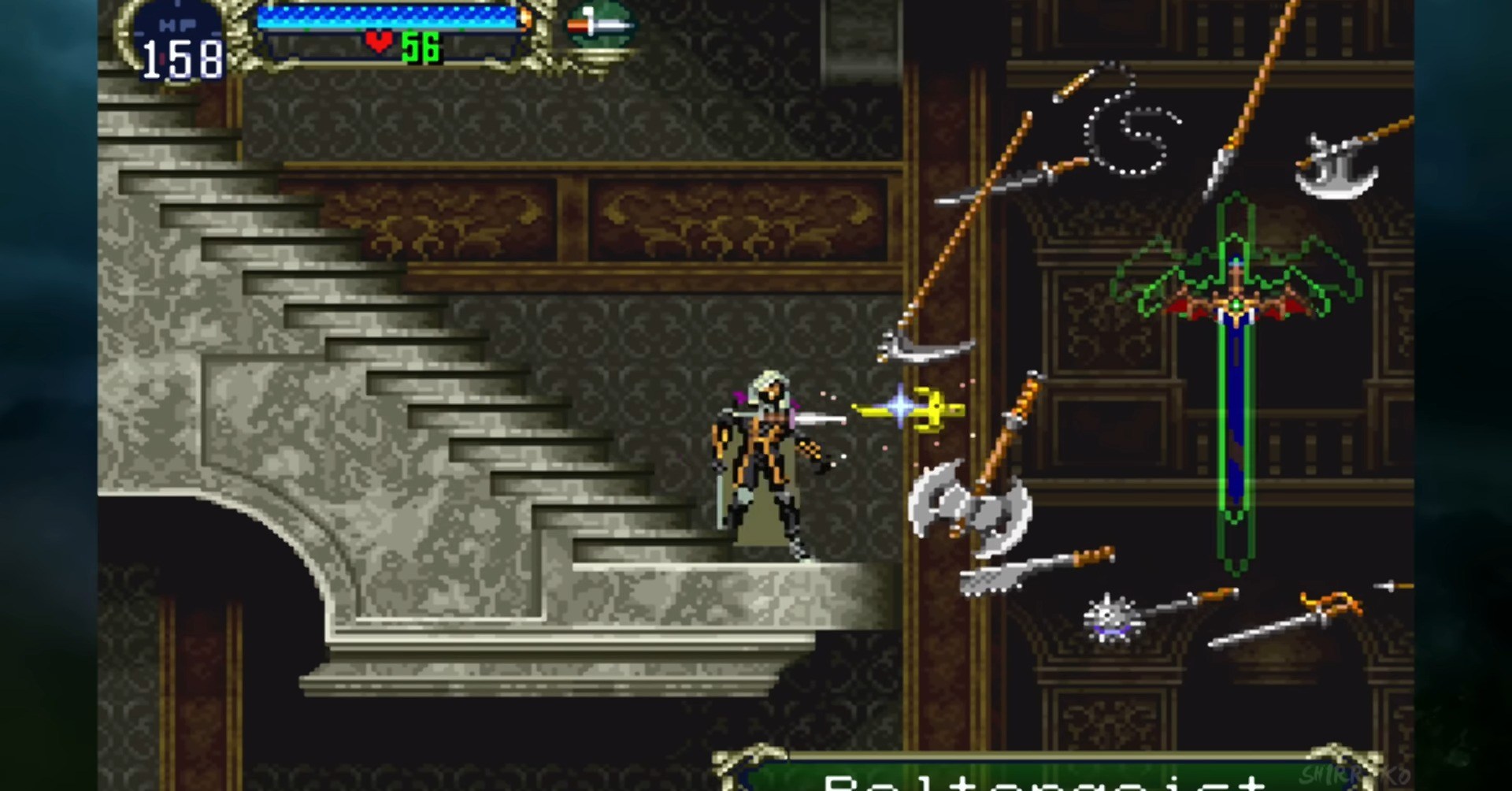In the pantheon of Cool Swords, massive slabs of metal, blades made of space rock, and icons like the Master Sword and Phantom Blade steal much of the attention. But the living sword, a blade that houses a soul or living being within, or is simply just a sword-shaped creature, may be swording’s coolest sword.
Demonic or otherwise cursed swords, weapons that thirst for blood or hunger for human souls, are not necessarily living swords, though they too are cool. Who doesn’t long to equip a weapon that slowly drains one’s health, with the promised trade-off of immense power, and be slowly corrupted by a malevolent force? We all do. The sword that is alive, and has purpose, is an intoxicating trope. There should be more souls trapped in swords, not fewer. That’s my platform.
The best (and, sorry, most obvious) pick for the living sword platonic ideal is the Soul Edge, which is not only a gnarly, veiny living sword wielded by various fighters, but the central antagonist of the entire Soulcalibur series. The Soul Edge, lore says, did not begin its existence as a living thing. It was simply a regular sword that became corrupted by blood and violence. It sought out hosts to wield it, and be corrupted by it. Of course, the Soul Edge has one fatal design flaw: a giant eyeball, every video game bad guy’s weak point.
Over the course of the Soulcalibur franchise, Soul Edge has taken many forms — not just Cool Greatsword shape — and eventually broke free of its reliance on humans to wield it. Soul Edge manifested a humanoid form to become Inferno, in effect wielding itself as a big guy with a cool sword. In reality, Soul Edge simply became another cool trope: possessed, living armor.

Arguably the most kid-friendly living sword is Pokémon X and Y’s Honedge. While many other Pokémon are simply creatures that bear a remarkable resemblance to an inanimate object, Honedge follows the possessed living sword model, but is also akin to a hermit crab. According to Honedge’s Pokédex entry, the blue jewel embedded in the handguard of its body “is the true body of Honedge.” The rest is just leftover sword from some poor dead guy.
Better still, Honedge lore notes that unlike many other living swords, it hates to be handled. “If anyone dares to grab its hilt,” Honedge’s Pokédex entry reads, it wraps its sash “around that person’s arm and drains that person’s life energy completely.” So yeah, don’t try to wield Honedge or you’ll probably die. (This is a game series for children.)
Honedge understands many of the cool sword rules, including that one sword is cool, but two swords is even cooler. Hence, it evolves into Doublade, two swords “which cooperate via telepathy to coordinate attacks and slash their enemies to ribbons.”
One type of living sword knows that there’s no need to stop at two or even three swords. Castlevania’s recurring Ruler Sword — also known as the Spectral Sword — is a poltergeist-possessed sword that wields a dozen other swords (and daggers and shields) to give whomever is trespassing in Dracula’s castle a bad time. The Ruler Sword may be a possessed sword, but it also understands showmanship. It forms a snowflake-like pattern with its arsenal of swords as a display of power.

First introduced in Castlevania: Rondo of Blood, the Ruler Sword is just one of many living swords featured in the Castlevania franchise. But it out-cools the Evil Sword, a black blade with a goofy face from Castlevania: Lament of Innocence, and the Sword Familiar, a talking blade from Castlevania: Symphony of the Night that loses cool points by saying “Slash!” and “Slice!” as it slices enemies of its own free will.
My favorite living sword, and maybe the darkest living sword in games, is the Snapdragon from the Tactics Ogre franchise. Featured in Tactics Ogre: The Knight of Lodis and Let Us Cling Together, the Snapdragon requires sacrificing one of your allies to forge it. What makes the Snapdragon unique is that casting the spell summons the sword and traps the sacrificed character inside of it, and the sword’s attributes are based on the unlucky soul’s class and stats.
Sacrificing a fairy who’s in your army, for example, imbues the Snapdragon sword with extra luck. A Snapdragon borne of a Dragoon-class character will do extra damage to dragon-type enemies. But all Snapdragons are consistent in that the name of the sword is taken from the name of the felled character who created it, so you always remember which of your teammates died to make this sword come to life. (Also interesting is that characters use the Snapdragon spell on themselves willingly. It’s intense.)
There are many other examples of living swords, including Baldur’s Gate’s Lilarcor, maybe gaming’s annoying talking blade; Donkey Kong Country’s Kleever, a sentient cutlass and probably the closest equivalent to Excalibur in the Mario universe; and Aatrox, League of Legends’ angry-guy-stuck-in-a-sword. But it’s an under-utilized trope that needs even more representation in gaming, especially since we may never hear from ol’ Soul Edge ever again.
The post Is there any sword cooler than a living sword? appeared first on Polygon.




